“How do you like my new logo, is it good?”
A friend to our firm “re-branding” his consulting firm asked us this today on LinkedIn.
And in the simplest terms, we might have responded “looks nice, tighten up the font so the name of the company is easier to read and worry about that three-dimension iconography in application” but that would have been a disservice to our friend.
Because a logo is more than an icon and a font. It is the core of your brand. And your brand must speak in every way to your customer profile, your corporate culture, your industry, your core messaging and, of course, your product or service. And your logo must take a strong crack at representing all of these critical elements.
Your logo has to reflect the things that appeal to your customer. This is especially challenging in technology companies. You think “well, it’s just gotta’ look techy” but most people’s definition of “techy” is sleek, silver and computer-like. If you’re selling the world’s best technology for filtering garbage from sea water? Well, motherboards and the goodness of the creatures of the sea and waters of the ocean don’t really jive, do they.
And you may have disparate audiences for your product or service. Despite the size of it, a logo may be a great place to try and find an appeal to both. We’re working with a hundred-year-old realty company. And while they have a trusted name and established audience of buyers and sellers, they are also trying to showcase new perks they offer buyers, sellers and agents alike using advanced technology that the realty market is creating. These technologies make buyers and agents traipsing from home to home and sellers’ homes safer. They also have a longstanding tagline about doing business on a handshake.
So notice that in the summary above, we have several concepts to tackle. And the best summary of how we do that is with one word: Metaphor. We live, eat, breathe and love the nuance of metaphor. Look at Nike (though maaaayybe we shouldn’t use them as an example because they got really lucky for $35). Their simple metaphor was “movement” and everything about the Nike swoosh says “move!”. Add in the angling reminiscent of a runner’s foot as it lands heel-to-toe and lifts off of the pavement again, the “swoosh” of a basketball player taking one over the rim, or the hand of the QB just as he releases the hail-Mary pass. (you’ll never look at the Nike logo the same now, you’ll see what Nike implanted in our collective subconscious every time!).
In our example, we need to account for metaphors including (but certainly not limited to):
- Tradition
- Progress
- Technology
- Trust
- Handshake-style business dealings
- Homes
- Safety
- People
Are there ways to combine these many metaphors into one logo? We think so (and we’ll let you see it when we’re done!). And there are key places in each and every logo to look at incorporating metaphors. These are:
- Color: This one is usually the most obvious, yet often missed. But think about it. If you’re selling fire or theft prevention – than a burning red or orange color choice might not be the best one. What colors make people feel safer? Warm blue-greens are the top choice.
- Font choice: Usually people understand they need to examine this as a part of their logo. BUT, but we will tell you that seasoned graphic designers will save you hours of time and research because they can spot the right font that will reflect the metaphors AND work well in application! Our designers typically give our brand strategists about five choices, we narrow it to two (three max) for the client and make sure that we know why we’ve picked those and how they represent the brand message and metaphors.
- Logo imagery: Again, this is an obvious place to use metaphor. But it can be tricky (and tends to trip up technology companies especially). We can’t tell you the number of times a company doing weapons detection or gun safety tech have asked us to use a gun-sight in their logo. That’s the opposite of the needed metaphor. A gun sight means someone has you in their crosshairs, so isn’t the job of the weapons protection company to avoid that? Again, a team of brand strategists and designers will use years of experience in understanding metaphor to ensure the imagery gives off the correct message.
- Movement and dimension: Not just for brand strategy, but also for in-application use, movement and dimension must be considered as part of overall design. Typically, our tech companies want the most three-dimensional logo possible and we get why. Everyone wants to look like a vanquishing hero and light-reflecting, high-movement, super-hero-like details seem to be the way. BUT, you have to remember what happens in application. Try embroidering a “rivet” contained in your steel-shield logo onto a shirt. Looks like a polka-dot. And No lie.
Those are the chief places “metaphor” can be reflected in your logo. So start with your customer profile, your corporate culture, your industry, your core messaging and, of course, your product or service and build metaphors to suit. Then let them be your guide to developing the logo that best represents you.

